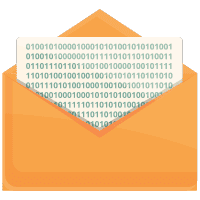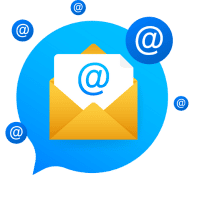When people ask me why they should dive into Python programming, I point them toward to words of Brian Cohen:
My favorite language for maintainability is Python. It has simple, clean syntax, object encapsulation, good library support, and optional named parameters.
Knowing how to get started with Python feels daunting. But I’ll show you how with 10 easy steps.

Step One: Find the Right Course
There are many courses out there to help you learn Python. Unfortunately, many spend too long on the theoretical elements and syntax. This is especially frustrating when the syntax is very similar to the English language.
I know that if I was new to Python, I’d want to actively make something ASAP. Even if it’s something simple like a graph for data visualization. Finding a Python programming course at CodeAcademy is a good place to start.
Step Two: Understand the Basic Syntax
I do believe that spending too much time on syntax can disrupt your early progress. Nonetheless, you must learn the basics if you want to get to grips with Python quickly.
Crucially, when learning how to get started with Python, you must know the 35 keywords;
And, As, Assert, Await, Async, Break, Class,
Continue, Def, Del, Elif, Else, Except, False,
Finally, For, From, Global, If, Import, In,
Is, Lambda, Non local, None, Not, Pass, Or,
Raise, Return, True, Try, While, With, Yield.
Step Three: Understand Other Programming Languages
A little understanding of other computer programming languages like C++ or JavaScript can be very useful. If you already have a foundation of knowledge in these areas, be sure to freshen up your knowledge before starting Python.
While all different, coding languages often share transferable skills. At the same time, HTML comprehension serves you well.
Step Four: Read the Python Tutorial
In addition to learning the keywords of Python, you should read the Python 3 tutorial. It is made by the creators, meaning everything is useful. As a beginner, you won’t need every piece of info just yet. Still, it will give you a foundation of knowledge to build upon. It’s also a resource you can return to throughout your journey.
Skipping this step is probably the biggest regret of my own journey with Python. Learn from my mistake.

Step Five: Build a Support Network
Surrounding yourself with other students, as well as mentors, is vital for learning Python. I personally love the slight competitive nature that this brings. Moreover, you can share tips and seek advice. Subreddits like r/Python and r/LearnPython can be particularly useful.
Thanks to cloud computing, you can also use real-time collaborations. This could be very useful when working on more ambitious Python programming projects for beginners.
Step Six: Code Something Fun
When you make a career in Python, you’ll often work on what the client wants. The learning curve is a chance to work on something you enjoy. Structured projects like apps and websites are great. Games are perhaps the most enjoyable of all.
You can use structured Pygame tutorials to make simple Python-based games. They’re fun to create, enjoyable to play, and something you can show off to friends. Including people who are not programmers.
Step Seven: Look at Open Sources
The value of collaboration has already been discussed. Open-source platforms are a great resource for collaborating. Moreover, it’s a chance to show your newly developed skills by working on someone else’s projects. You can find several projects on GitHub. It is the platform where most new contributors have the greatest success.
After submitting a bug fix or other Python code request, you’ll also gain feedback from the project manager. I honestly believe that this makes open-source contributions one of the most valuable tools at your disposal. Regardless of whether the feedback confirms your success or highlights an issue.
Step Eight: Have a Clear Area of Expertise
Python can be used for many applications. As a working developer, you should have an understanding of web, GUI, and command-line projects. As you develop your skills, though, a clear favorite will emerge. Follow this niche as it will be key for your future career.
Many learners reach their goals within a year. But this is only possible when your objectives are defined. A clear focus on one area of Python programming will help.
Step Nine: Embrace Harder Projects
While helping others is great, working on your projects is a valuable part of the learning process. Intermediate projects could include;
- Coding a music player,
- Build a SMS spam detection system,
- Create a movie recommendation tool,
- Develop a Blackjack game,
- Build a chatbot.
I think one of the best things about getting started with Python is that you will continually look to make the next project better than the last. Intrinsic motivation is the catalyst for progress. Having something to show for your work is the perfect solution
Step Ten: Keep Practicing
Whether it’s Python or CSS, your progress will be far faster when you program daily. Infrequent learning will cause you to make slow progress and forget aspects between sessions. With regular practice, though, Python programming stays fresh in the mind.
As you get more from your Python programming, you’ll enjoy it more too.
Conclusion
Python is one of the best programming languages to learn, and now you know how to dive in. Finally, though, it’s vital that you use Python 3 as its predecessors are no longer supported and will be hit by bugs.




